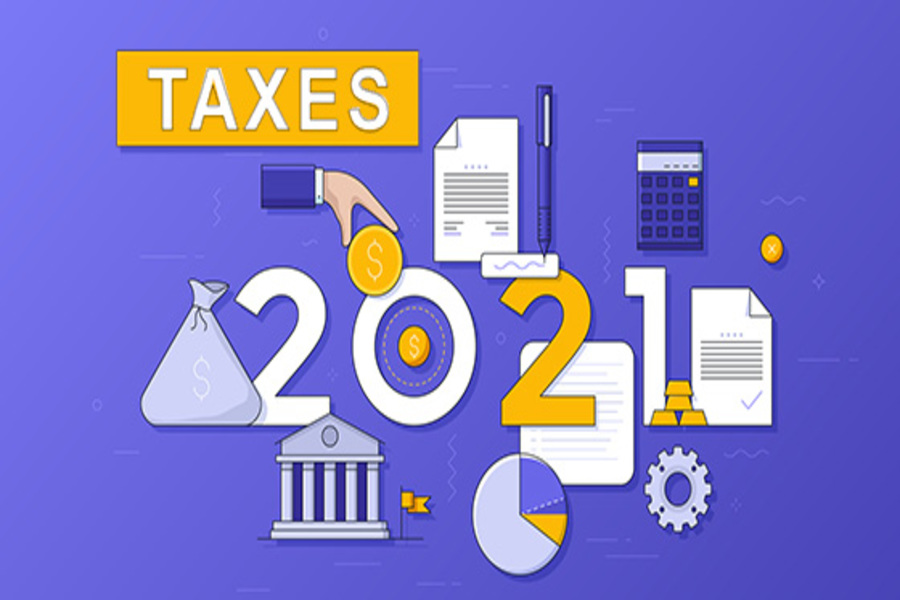During the COVID-19 pandemic, many people are working from home. If you’re self-employed and run your business from your home or perform certain functions there, you might qualify for home office deductions and be able to claim to expenses against your business income. There are two methods for claiming this tax break: the actual expenses method and the simplified method. Who qualifies? In general, you qualify for home office deductions if part of your home is used “regularly and exclusively” as your principal place of business. If your home isn’t your principal place of business, you may still be able to deduct home office expenses if 1) you physically meet with patients, clients or customers on your premises, or 2) you use a storage area in your home...

If your business struggles to generate steady cash flow from operations, factoring is a possible solution. With factoring, a business sells the right to collect on customer invoices to a factoring company in exchange for an immediate payment. If you have slow-paying customers, factoring accelerates the collections process. But some companies abuse factoring and use it to commit fraud. The basics There are two forms of invoice factoring. With recourse factoring, the business selling invoices agrees to repay the factor the advance it received (a percentage of the invoice’s face value, minus a fee) if a customer doesn’t pay the full amount. Non-recourse factoring is less common because it involves more risk for the factor. The business doesn’t have to repay the factor if a customer becomes insolvent during...
(This is Blog Post #988)...
One of the most common routes for occupational fraud perpetrators runs through the accounts receivable department. Unless you’re aware of these schemes and take steps to prevent them, your business could face serious financial losses. Creative misappropriation Receivables fraud occurs when dishonest employees divert customer payments for their personal use. The most popular method is known as “lapping.” It involves the application of receipts from one account to cover misappropriations from another. For example, rather than credit Customer A’s account for its payment, a dishonest employee pockets the funds and later posts a payment from Customer B to A’s account, Customer C’s payment to B’s account and so on. Dishonest employees also often abuse discounts and write-offs. Instead of crediting a payment to the customer’s account, fraudsters might...
Merger and acquisition activity in many industries slowed during 2020 due to COVID-19. But analysts expect it to improve in 2021 as the country comes out of the pandemic. If you are considering such a transaction, it's important to understand the tax implications of buying or selling a business. Two ways to arrange a deal Under current tax law, a transaction can basically be structured in two ways: (1) Stock (or ownership interest) A buyer can directly purchase a seller’s ownership interest if the target business is operated as a C or S corporation, a partnership, or a limited liability company (LLC) that’s treated as a partnership for tax purposes. The current 21% corporate federal income tax rate makes buying the stock of a C corporation somewhat more attractive. Reasons:...
If you’re like many Americans, letters from your favorite charities may be appearing in your mailbox acknowledging your 2020 donations. But what happens if you haven’t received such a letter — can you still claim a deduction for the gift on your 2020 income tax return? It depends. What is required To support a charitable deduction, you need to comply with IRS substantiation requirements. This generally includes obtaining a contemporaneous written acknowledgment from the charity stating the amount of the donation, whether you received any goods or services in consideration for the donation and the value of any such goods or services. “Contemporaneous” means the earlier of: The date you file your tax return, or The extended due date of your return. So if you made a donation in...
Many people are more concerned about their 2020 tax bills right now than they are about their 2021 tax situations. That’s understandable because your 2020 individual tax return is due to be filed in less than two months (unless you file an extension). However, it’s a good idea to acquaint yourself with tax-related limits affecting individuals that may have changed for 2021. Below are some Q&As about tax amounts for this year. Be aware that not all tax figures are adjusted annually for inflation and even if they are, they may be unchanged or change only slightly due to low inflation. In addition, some amounts only change with new legislation. How much can I contribute to an IRA for 2021? If you’re eligible, you can contribute $6,000 a...
A number of tax-related limits that affect businesses are annually indexed for inflation, and many have increased for 2021. Some stayed the same due to low inflation. And the deduction for business meals has doubled for this year after a new law was enacted at the end of 2020. Here’s a rundown of those that may be important to you and your business. Social Security tax The amount of employees’ earnings that are subject to Social Security tax is capped for 2021 at $142,800 (up from $137,700 for 2020). Deductions Section 179 expensing: Limit: $1.05 million (up from $1.04 million for 2020) Phaseout: $2.62 million (up from $2.59 million) Income-based phase-out for certain limits on the Sec. 199A qualified business income deduction begins at: Married filing jointly: $329,800...
If you have an estate plan and also have creditors, you could be a fraud perpetrator — without knowing it or intending to defraud anyone. In some circumstances, creditors can challenge gifts, trusts and other strategies for leaving assets to heirs as fraudulent transfers. Here’s how to keep your estate plan from running into trouble. 2 types Most states have adopted the Uniform Fraudulent Transfer Act (UFTA). The law allows creditors to challenge transfers involving two types of fraud: Actual fraud. This means making a transfer or incurring an obligation “with actual intent to hinder, delay or defraud any creditor,” including current creditors and probable future creditors. Constructive fraud. This is a more significant threat for most people because it doesn’t involve intent to defraud. Under UFTA,...
You may have the best internal controls in the business world, but if your employees don’t follow them, your company is at serious risk for fraud. The same is true if workers aren’t aware of your company’s risks and can’t recognize red flags. The solution? Educate them. Training is critical A forensic accountant can conduct on-site, broad-based training for employees in the form of live or virtual presentations. This expert might use role-playing to help staff understand the various forms fraud can take, as well as how perpetrators think and identify their victims’ vulnerabilities and weaknesses. Enlisting the help of external experts is particularly important for smaller businesses. Not only are they more vulnerable to fraud, but they’re less likely to have in-house fraud expertise. Small-business training can...
- 1
- 2
- 3
- 4
- 5
- 6
- 7
- 8
- 9
- 10
- 11
- 12
- 13
- 14
- 15
- 16
- 17
- 18
- 19
- 20
- 21
- 22
- 23
- 24
- 25
- 26
- 27
- 28
- 29
- 30
- 31
- 32
- 33
- 34
- 35
- 36
- 37
- 38
- 39
- 40
- 41
- 42
- 43
- 44
- 45
- 46
- 47
- 48
- 49
- 50
- 51
- 52
- 53
- 54
- 55
- 56
- 57
- 58
- 59
- 60
- 61
- 62
- 63
- 64
- 65
- 66
- 67
- 68
- 69
- 70
- 71
- 72
- 73
- 74
- 75
- 76
- 77
- 78
- 79
- 80
- 81
- 82
- 83
- 84
- 85
- 86
- 87
- 88
- 89
- 90
- 91
- 92
- 93
- 94
- 95
- 96
- 97
- 98
- 99
- 100
- 101
- 102
- 103
- 104
- 105
- 106
- 107
- 108
- 109
- 110
- 111
- 112
- 113
- 114
- 115
- 116
- 117
- 118
- 119
- 120
- 121
- 122
- 123
- 124
- 125
- 126
- 127
- 128
- 129
- 130
- 131
- 132
- 133
- 134
- 135
- 136
- 137
- 138
- 139
- 140
- 141
- 142
- 143
- 144
- 145
- 146
- 147
- 148
- 149
- 150
- 151











